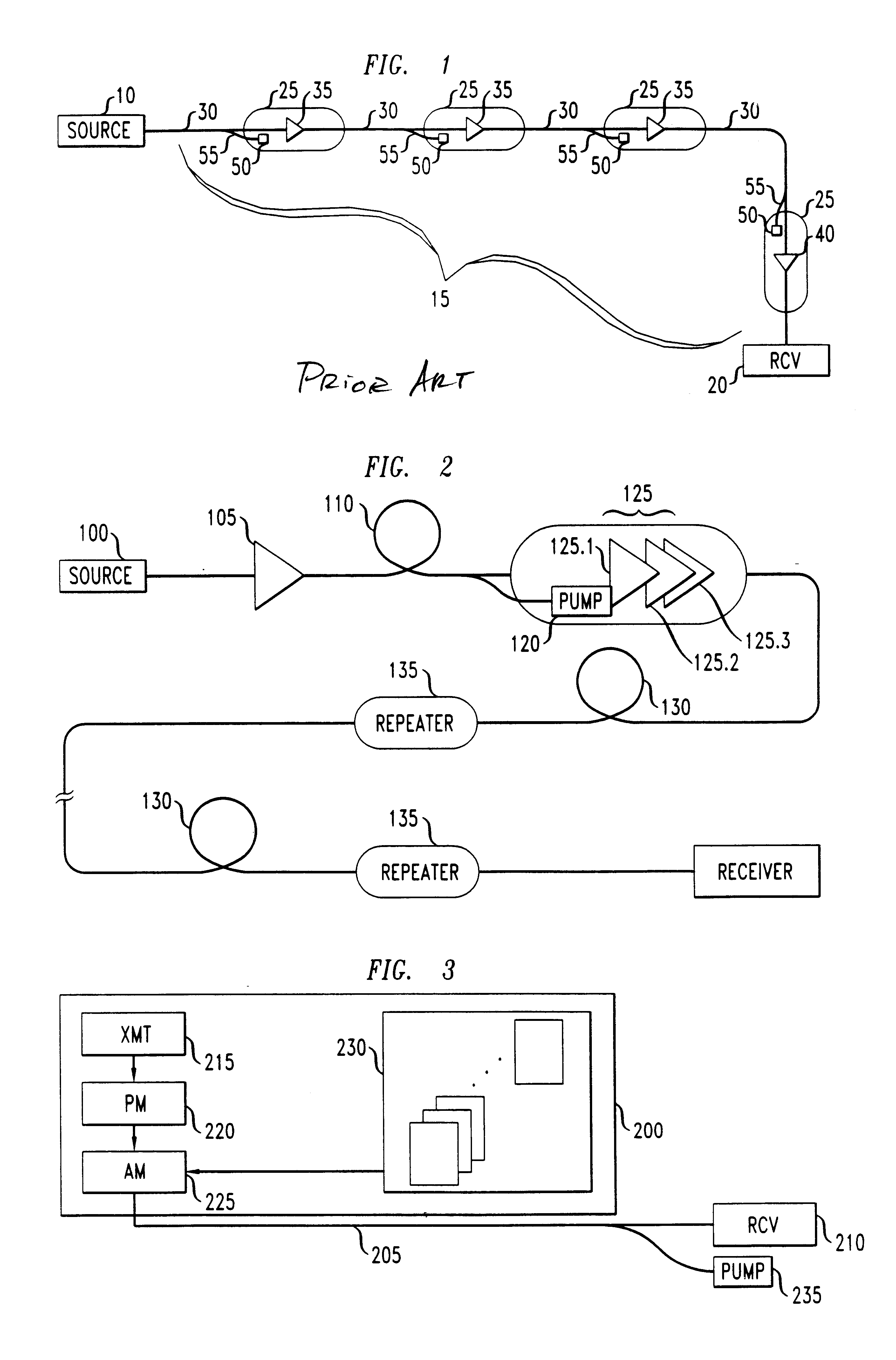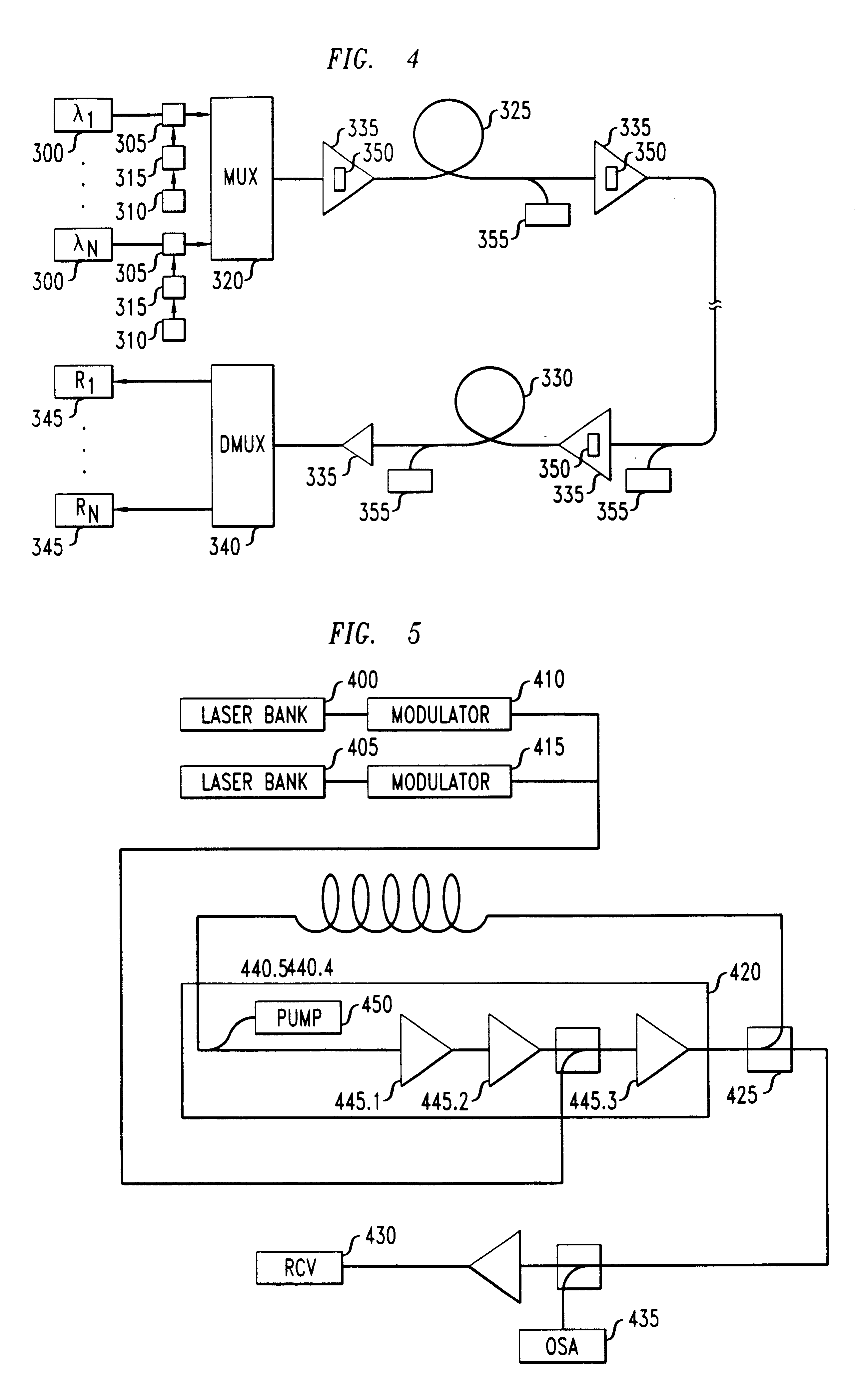Method of optical signal transmission with reduced degradation by non-linear effects
a nonlinear effect and optical signal technology, applied in multiplex communication, wavelength-division multiplex systems, instruments, etc., can solve problems such as troublesome cross-phase modulation, degrade system performance, and certain difficulties in optical communication
- Summary
- Abstract
- Description
- Claims
- Application Information
AI Technical Summary
Problems solved by technology
Method used
Image
Examples
Embodiment Construction
The first and second experiments described above were carried out using the laboratory prototype illustrated in FIG. 5. Forty-nine laser sources spanning the wavelength range 1541.75 nm-1561.01 nm at 50-GHz intervals were arranged in two banks 400, 405. The lasers were staggered such that one bank contained odd-numbered channels only, and the other contained even-numbered channels only. All lasers in each bank were modulated by a respective Mach-Zehnder modulator 410, 415. Using these modulators, data in the form of 2.sup.31 -1 pseudo-random bit sequences were encoded at a rate of 10 Gb / s. The combined output from modulators 410 and 415 was launched into a fiber loop, which included hybrid amplifier 420. At the output of amplifier 420, optical 10% coupler 425 diverted a portion of the signal to receiver 430 and optical spectrum analyzer 435. The fiber span included five sections 440.1-440.5 of dispersion-shifted fiber having an effective cross-sectional area of about 50 square micro...
PUM
 Login to View More
Login to View More Abstract
Description
Claims
Application Information
 Login to View More
Login to View More - R&D
- Intellectual Property
- Life Sciences
- Materials
- Tech Scout
- Unparalleled Data Quality
- Higher Quality Content
- 60% Fewer Hallucinations
Browse by: Latest US Patents, China's latest patents, Technical Efficacy Thesaurus, Application Domain, Technology Topic, Popular Technical Reports.
© 2025 PatSnap. All rights reserved.Legal|Privacy policy|Modern Slavery Act Transparency Statement|Sitemap|About US| Contact US: help@patsnap.com



